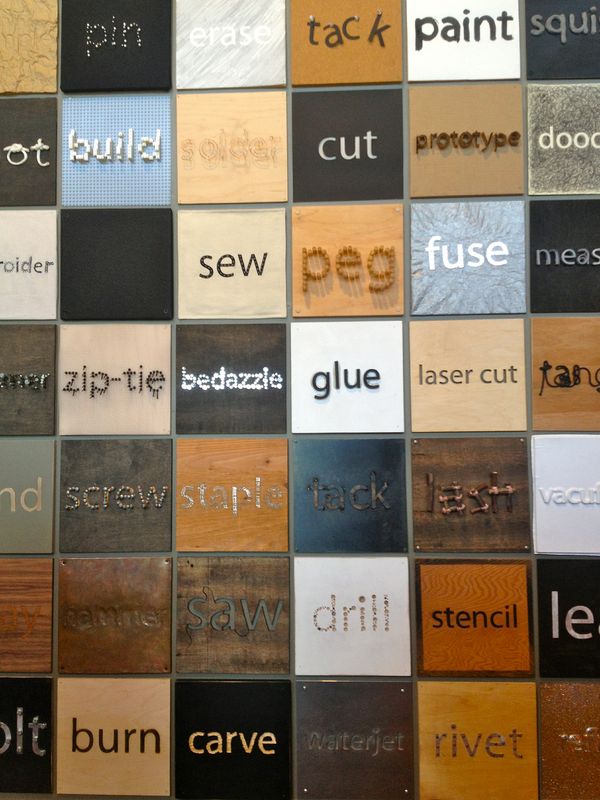In my last blog, I encouraged stepping out of your comfort zone to jump start your creative juices. My big leap was taking a family bike trip through California wine country (it’s true, you never forget how to ride) . Eye opening and empowering as it was (I think I can, I think I can make it up one more hill), I was equally awed by a side trip we took to the newly opened San Francisco Exploratorium.
This sprawling space of innovation and inspiration makes you stop, speculate, and smile at every turn. From the drinking fountain in a toilet (hmmm, should I or shouldn’t I?) to the giant (and still expanding) life-story toothpick sculpture by Scott Weaver; from the conflicting social cues in the Human Phenomena exhibits, to Arthur Ganson’s perpetual gears in concrete, there are endless seeds of thought ready to ripen. Executive Director Dennis Bartels described it as a 21st century learning laboratory; a place where even teachers are students, and exploration almost always leads to discovery. Mike Petrich, Director of the Exploratorium Making Collaborative, explained that the exhibits were designed to make visitors slow down and rethink about what they know. “We’re not afraid of “f” words,” he said, quickly clarifying them as “Failure and Frustration.”
It’s interesting to see what happens with open-ended learning. As we walked around the museum, Mike pointed out a wall where visitors create a giant marble run. But what took it into the realm of extraordinary were the players. Young and old (and I mean really young…and really old) were creating together. Two kids I assumed were siblings turned out to not even know each other’s names. This spontaneous collaboration was joyful and productive. I saw a Dad and his daughter enter a color room. I watched a grandparent-type couple (no grandkids in sight) play a perception game. In the Tinkering Studio kids were creating paper circuits. Aha! seemed to be written on everyone’s faces.
As brilliant as the exhibits were, that’s only half the story. The Exploratorium space was designed to promote innovation. The curve of the ceiling over the tinkering studio invites people in, without enclosing them from view. The museum exhibit shop sits at the center of the galleries so visitors can see what’s being made, talk about exhibits with developers, and feel free to suggest new ideas. Even the executive “offices” were open spaces. I passed two meetings being conducted circle-time-style in different corners of the loft-like upper floor. It was all I could do not to join in. The engineering of innovation is an art in itself. That realization, more than any exhibit I saw, made me do what the gurus wanted: stop, speculate and smile.
So that’s my out-of-my-element (actually, in my element) story. It’s only mid-July. You still have plenty of time to avert a summer slide by pushing your limits before September rolls around. If you can’t get away, you take a virtual trip to the Exploratorium. Tell me what you discover at wendy@sandboxsummit.org.





















